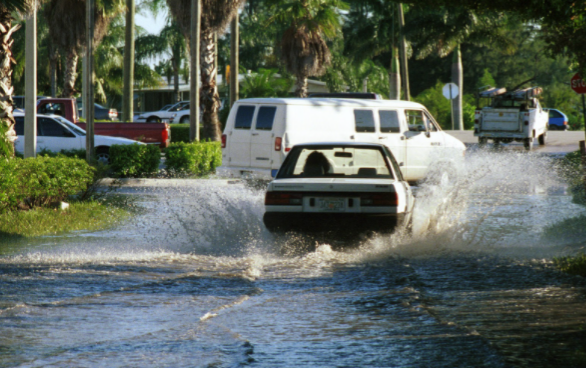The Ocean is Going to Burp: Here’s Why You Should Care

Photo courtesy of Wikimedia Commons
If you are a fan of soda or sparkling water, you know the feeling when you have taken too many gulps of that favorite beverage. Bubbly sensations fill your stomach and you feel something begin to rise to your throat. It all culminates in a loud release of gas that will perhaps draw the disgust of those around you. You burp.
But why? Why do these carbonated drinks elicit such ungraceful reactions by our bodies? The answer lies in their name: carbon-ated drinks.
Carbonated drinks contain dissolved carbon dioxide (CO2), giving it its characteristic fizz. Cold water is better at dissolving that CO2 than warm water. When you take a sip of your favorite fizzy drink, it heats up in your body, causing the gas to escape and exit through your mouth, resulting in a burp.
Climate scientists are not too worried about the carbon released by human burping. But what if it was not a human body burping, but a far larger body, perhaps even expanding across 139 million square miles? What if it was the ocean?
Saturation Is the Game
For billions of years, the world’s oceans have been acting as massive carbon sinks, absorbing gigatons of CO2.
But wait: If the ocean’s temperature is cold, how is it so good at dissolving CO2? After all, it is easier to stir sugar in coffee that is boiling hot rather than freezing cold, right?
While that logic may be true for solid substances like sugar, gases work differently. Although the solubility of water (its ability to dissolve substances) typically increases as its temperature rises, the opposite is true with regards to carbon dioxide. Scientists use a “saturation curve” to show the relationship between temperature and solubility.
The curve shows that if ocean temperatures continue to rise, the ocean will no longer keep the CO2 that it is trapping. After that carbon is released, it only has one place to go: up. That will mean the ocean will have become a carbon emitter.
If the ocean starts emitting carbon dioxide, global warming will get much worse, leading to more ocean warming. More ocean warming will cause the ocean to emit even more carbon, resulting in a vicious cycle.
Rising Sea Levels
Not only does the ocean absorb a lot of the CO2, but it also absorbs much of the heat energy that could stay in the atmosphere. As the ocean absorbs this energy (particularly at the surface of the ocean), the water expands and thus the sea level rises. This is in addition to the water from glaciers, and especially those of Greenland, that regularly flows into the ocean.
It is expected that the ocean will rise 3 feet by 2100, according to a recent United Nations climate change report. In Florida alone, homes and cars are already at risk: 12 wastewater treatment plans are already 1 to 3 feet below the current sea level, which continues rising. The state is already spending billions of dollars to deal with the rising of the ocean. At times roads are even closed due to “sunny day flooding.”
A Tipping Point
Obviously the ocean cannot burp, but its ability to store CO2 is being compromised. For decades, the ocean has been hiding the effects of global warming. By absorbing the excess carbon in the atmosphere, we are being provided temporary relief from the impacts of climate change. But the ocean cannot protect us forever.
Humans will not be able to adapt to climate change, but need to address it. The knowledge is here and the time to act is now; what we do today will either pay dividends down the road or accelerate us further into a runaway greenhouse effect.
If that point is reached, then trying to reduce CO2 emissions becomes useless, like rowing a boat that just went over a waterfall. There is no turning back.

